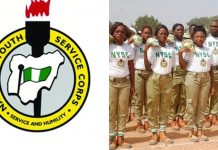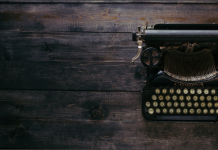Physics Examination QuestionSometimes it might be really tough after long day stress to effectively come out with outstanding and eye catching Questions in physics examination for senior school students. |
Below are well define questions for senior secondary school three, preparing for foreign and mock examinations. |
1. A p-n junction diode is used as A.a rectifier in a d.c circuit B. an amplifier in an a.c circuit C a rectifier in an a.c circuit. D a valve in an a.c circuit |
2. Which of the following is best used for the determination of the diameter of a thin constantan wire? Calipers. B Meter rule. C Micrometer screw gauge. D Vernier calipers |
3. A simple harmonic oscillator has a period of 0.02s and amplitude of 0.25 m. Calculate the speed in m/s at the center of the oscillation A. 1.25 B. 25 C. 100 D. 100 E. 400 |
4. A body is projected horizontally from the top of a cliff 45m above the ground. If the body lands at a distance of 30m from the foot of the cliff, calculate the speed of the projection A.10m/s B. 15m/s C. 20m/s D. 30m/s |
5. Capacitors are used in the following devices except A. ceiling fans B. Water pumping machines C. electric irons D. television sets |
6. The following devices uses plane plane mirrors in their operations except A. periscope B.sextant C. kaleidoscope D.binoculars |
7. Neutrons are used to induce artificial radioactivity because they A. are ionizing B. are energetic C.have no charge D. have no mass |
8. The battery connection that permits current to flow across a p-n junction is called. A amplification B. rectification C forward biased D reverse biased. |
9. The process through which free electrons leave the surface of hot metals is known as A. thermionic emission B. photo emission C. photon emission D. electron emission. |
10. The motion of smoke particles from a chimney is typical of A. Oscillatory motion B rotational motion C. circular motion D. random motion. |
11. The component of vector X along the direction of vector Y is zero when A. X is at an angle of 45o to Y B. X and Y are in opposite directions to each other C. X and Y are parallel to each other D. X is perpendicular to Y |
12. An engine of a car of power 80kW moves on a rough road with a velocity of 32ms-1. The force required to bring it to rest is A.2.5 x 106N B. 2.50 x 103N C. 2.58 x106N D 2.80x 103N |
13. A shooter wants to fire a bullet in such way that its horizontal range is equal to three times its maximum height. At what angle should he fire the bullet to achieve this ? A. 53o B. 68o C 30o D 45o. |
14. The correct unit of energy density is A. kgm-3s-2 B. kgm-1s-2 C. kgm3s-2 D. kgm2s-2. |
15. The main purpose of transformer in an a.c radio set is to A. increase power to the radio B. convert energy from a.c to d.c C. step down the voltage D. step up the voltage. |
16. An electric heater with a p.d of 240V connected across its terminal has a total resistance of 960. Find the power rating of the heater. A 4.00W B 0.25W C 60.00W D 38.40W |
17. Non-luminous object can be seen because they A. are polished B. are near C. reflect light D. emit light. |
18. Speed is the rate of A. change of velocity with respect to time taken B. change of displacement with respect to velocity C. change of distance with time D. change of distance with respect to displacement |
19. A submarine is observed to rise from a real depth of 80m to 60m in water. Calculate the change in apparent depth. A 60m B. 15mC. 80m D 45m |
20. The thermos flask is designed to A. prevent heat gain by conduction, convection and radiation Prevent heat loss by conduction, convection and radiation. C prevents heat loss or gain by conduction, convection and radiation. D. store hot tea or water. |
21. The thermometric property of a constant volume thermometer is A. change in pressure B. change in length C. differential expansion D. change in volume. |
22. The bond that forms a semiconductor is A. covalent B. electrovalent C. ionic D. metallic |
23. Which of the following observations is NOT an effect of surface tension? |
A. Droplets of water dripping slowly from a tap |
B. Mercury spilled on a clean glass plate forms small spherical droplets |
C. An insect walking across the surface of a pond |
D. Water flowing out more easily than engine oil from a container |
24. Which of the following physical quantities is correctly paired with its corresponding S.I unit? |
A. Density [ kg m3] B. Power [ J /s ] C. Specific latent heat [ J/kg/K ] D. Pressure [ N/m] |
Which of the following statements about solid friction are correct? It |
I. is a force. |
II. Occurs between the surfaces of two bodies in contact. |
III. Depends on the area of contact. |
A. I and II only B.I and III only C. II and III only D. I, II and III |
25. A body moving at a constant speed accelerates when it is in |
A. rectilinear motion B. translational motion C. circular motion D. vibrational motion |
26. A body accelerates uniformly from rest at 2 m/s2. Calculate the magnitude of its velocity after traveling 9m. |
A. 4.5m/s B.6.0m/s C. 18.0m/s D.36.0 m/s |
27.A swinging pendulum between the rest position and its maximum displacement possesses kinetic energy only B. potential energy only C. gravitational energy only D. both kinetic and Potential energy. |
28.An external force of magnitude 100 N acts on a particle of mass 0.15 kg for 0.03 s. Calculate the change in the speed of the particle. |
A. 50m/s B.25 m/s C.20m/s D. 5m/s |
29. A car of mass 800kg moves from rest on a horizontal track and travels 60m in 20s with uniform acceleration. Assuming there were no frictional forces, calculate the accelerating force. |
A. 240.00N B.800.00 N C.1600.00N D.2400.00N |
30. The ice and steam points on a mercury-in-glass thermometer are 10 cm and 30 cm respectively. Calculate the temperature in degree Celsius, when the mercury meniscus is at the 14 cm mark. |
A.20oc B.300c C.340c D. 700c |
31. Which of the following surface will radiate heat energy best? |
A. Red surface B. Whitesurface C. Black surface D.Yellow surface |
32. A body of mass 200g and specific heat capacity 0.4J/g/Kcools from 370c to 31oc. Calculate the quantity of heatreleased by the body. |
a. A.4800J B.1200J C.480J D. 202J |
33. According to the kinetic theory of gases, which of thefollowing properties of a gas can be affected by the collision of the gas molecules with the walls of its container? |
A. Temperature B.Energy C.Viscosity D. Pressure |
34 Which of the following waves is electromagnetic? |
A.X-rays B. Soundwaves C.Water waves D.Tidal waves |
35. Which of the following factors can affect the speed of sound in air? |
i. The temperature of the surrounding |
ii. The direction of wind |
iii. The pitch of the sound |
A. I and II only B.II and III only C.I and III only D. I, II and III |
36. Which of the following statements about sound waves is NOT correct? Sound waves can be A.reflected. B.refracted. C. diffracted D.polarized. |
33. The following are scalar quantities except A. Distance B.Speed C. Velocity D. mass |
37. Dew point is not affected by A. Wind B. The amount of water vapor in air C. temperature D. atmospheric pressure |
38. A thermometer records 680 mmHg at a steam point and 440 at ice point. The temperature it records at 380mmHg is A. -25oc B. -20Oc C. 20oC D. 25oC |
39. The ability of a wave to spread through round corners is called A. polarization B. dispersion C. Diffraction D. reflection |
40. The volume of a given mass of gas is inversely proportional to the applied pressure at constant temperature is illustrated by A. Charles law B. boyles’ law C. boyle’s law D. charle’s law |
SECTION B |
THEORY |
(60 Marks) |
Answer seven questions in all. |
Five questions from Part I and two questions from Part II |
All questions carry equal marks. |
PART I |
(Answer any five questions from this part |
1. A stone is projected upward witha speed of 30m/s from the top of a tower of height 50m, Neglecting air resistance, Determine the maximum height it reached from the ground |
2. A particle is projected at an angle of 300 to the horizontal with a speed of 250m/s. Calculate t |
(a) total time of flight of theparticle; |
(b) speed of the particle at its maximumheight. [g = 10m/s2 |
3. A stone projected horizontally from the top of a tower with aspeed of 4m/s lands on the level |
ground at a horizontal distance 25m fromthe foot of the tower. Calculate the height of thetower. [g = 10m/s2] |
4. State (a) the difference between plane polarizedlight and ordinary light; |
(b)Two uses of Polaroids. |
5. Define (a) electrolysis (b) electrolyte (c ) electrode. |
6. (a) Explain thermionic emission. |
(b) State two applications of electrical induction through gases. |
7. State two factors which affect the mass of element deposited during electrolysis |
b. list two examples of non-electrolytes |
8. Differentiate between plain polarization and interference as applied to polaroids |
9. (a) List two factors that can affect the rate of diffusion. |
(b) State two examples to illustrate the effects of surface tension. |
10. List two examples each of a substance with (i)low viscosity (ii)high viscosity |
b. When is a liquid said to be viscostatic |
PART II |
Answer any two questions from this part |
11. Distinguish between perfectly elastic collusion andperfectly inelastic collusion (b) Sketch a distance time graph for a particle moving in a straight line with (i)uniform speed (ii)variable speed [8 marks] |
(c) A body starts from rest and travels with a distance of 120, 300 and 180m in successive time interval of 12s. During each interval the body uniformly accelerated (i) Calculate the velocity of the body at the end of each successive time interval (ii) sketch a velocity -time graph for the motion |
[ 7 marks ] |
12. (a) Define the boiling point of a liquid. [2 marks ] |
(b) With the aid of a sketch diagram, describe an experiment to determine the boiling |
point of a small quantity of a liquid. [ 8 marks ] |
(c ) A piece of copper of mass 300g at a temperature of 9500c is quickly transferred in a vessel of negligible thermal capacity containing 250g of water at 250c. If the final steady temperature of the mixture is 1000c, calculate the mass of water that will boil away. |
[Specific heat capacity of copper = 4.0 x 102 J/kg/K] |
[ Specific heat capacity of water = 4.2 x 103 J/kg/K] |
[specific latent heat of vaporization of steam = 2.26 x 106 J/k] [5marks |
13. Explain the terms (i)inertia (ii)initial mass(iii) satellite (iv) Rockets |
(b) State three factors which affect the rate of evaporation of water from a pond |
c) Two ice cubes pressed together for some times were found to stick together when the pressure was removed. Explain this observation |
(d) The force applied to a material is 45N, if it produces an extension of 5m determine the stiffness of the wire, if an additional force of 8N is further applied determine it new extension. |
RELATED STUDY/EXAM QUESTIONS




